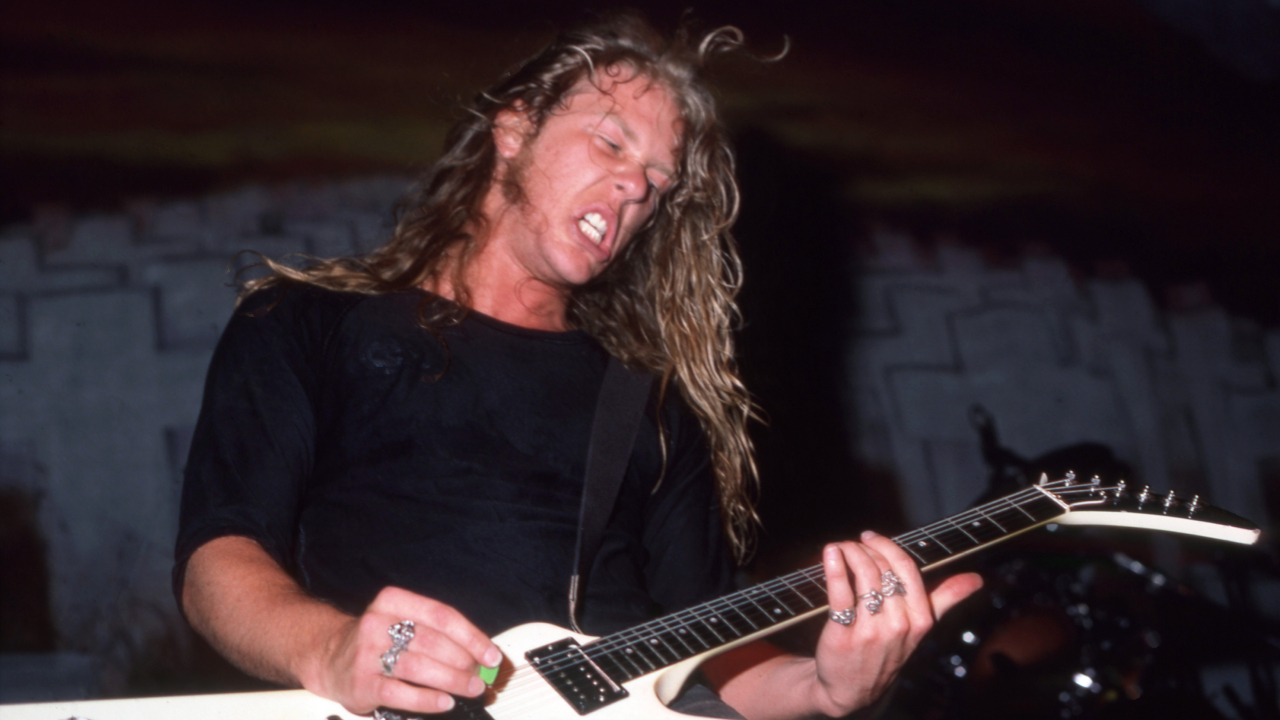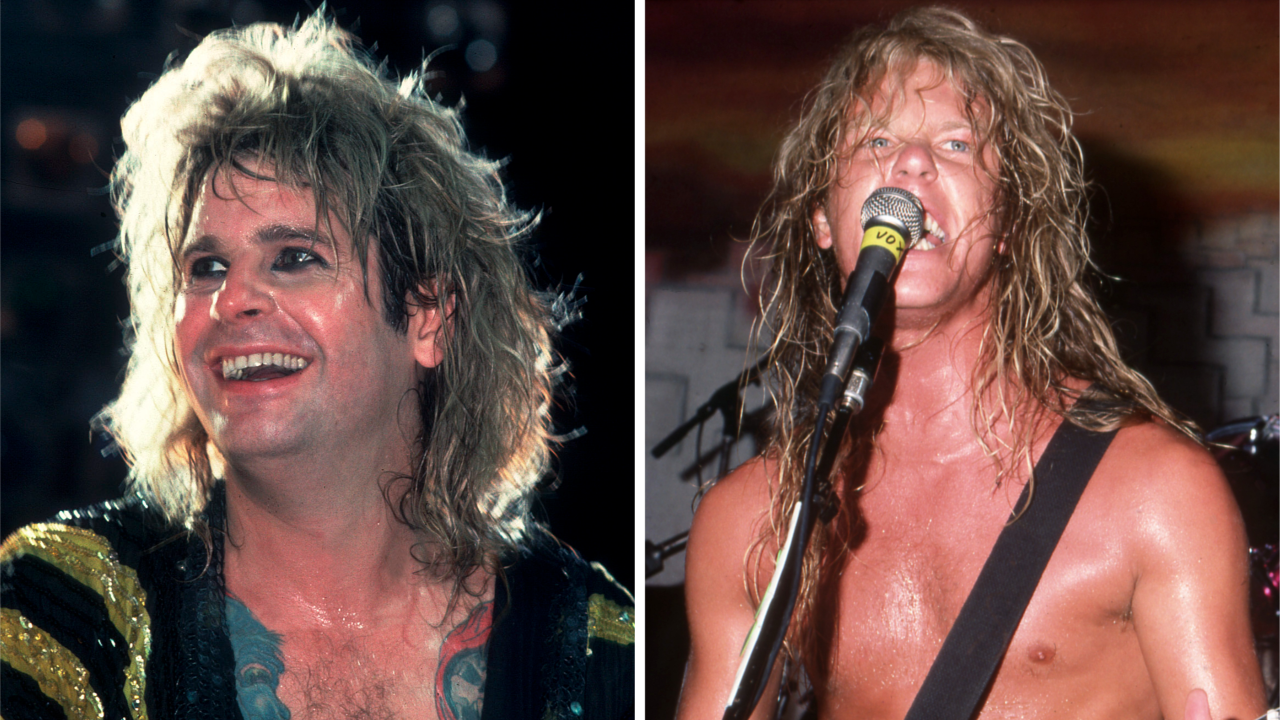When Metallica released Master Of Puppets on March 3, 1986, it screamed that the thrashers were about to become the next big thing. Not only was the album out through major label Elektra (one-time home to the Stooges and the Doors), but it then made it to number 29 in the US without a modicum of radio support and received the kind of acclaim otherwise reserved for the second coming of Jesus. Any American metalhead that doubted the band’s might and growing reputation was converted across the spring of 1986: during that time, Metallica toured the US with Ozzy Osbourne and routinely stole the show.
“They really gave me a run for my money, every single night,” the Prince Of Darkness told VH1’s Behind The Music in 1998. “They were really hard to follow!”
“It was such a transformative time,” Metallica drummer Lars Ulrich reflected on The Howard Stern Show in 2013. “It was our first go-around in the big leagues. We were in the majors! We’d been playing in the minors for years and now we were in the majors!”
Metallica and Ozzy’s campaign across the States began in Valley Center, Kansas, on March 24, 1986: a mere three weeks after Puppets dropped. From the outset, the Four Horsemen were fighting an uphill battle. 10,000 people or more were rocking up each night predominantly to hear Ozzy and his back-catalogue of woozy, groovy Black Sabbath and solo songs. Meanwhile, Metallica were armed with hellfire thrash metal, not to mention a setlist composed largely of tracks that had only been out for a number of days.
“Five years earlier, James [Hetfield, singer/guitarist] and I were meeting and figuring out what we were doing, and now we were playing arenas in America,” Lars said on Stern. “The first couple songs, everyone was looking up at us going, ‘What is this racket?!’”
However, as Metallica opened with Battery then rallied straight into Puppets’ dynamic title track, people started to get it. “45 minutes later, [the audience] were pumping their fists, getting into it and understanding what we were doing,” Lars continued.
Metallica had the song craft and showmanship to dominate the US tour, which continued all the way into August (with a couple of standalone Scandinavian dates crammed into the start of July). Behind-the-scenes antics still put the band on the precipice of bottling it, though.
For starters, the spring marked the apex of the notorious “Alcoholica” era: James, Lars, guitarist Kirk Hammett and bassist Cliff Burton were rising stars still in their early-to-mid-20s, and they relished all the indulgences that came with such a status.
“When you’re 22 years old, all you wanna do is get laid, get drunk and live all those excesses you’ve read about,” Lars told Behind The Music.
“We’d come offstage into the showers and there’d be a whole locker room shower filled with women,” said Kirk. “How great is that?”
“That happened plenty,” corroborated James. “Eight women washing you down at once – not a bad feeling.”
Meanwhile, Ozzy – whose habits with drink and drugs cost him his Black Sabbath spot in 1979 and have since entered heavy metal folklore – was being kept away from substances. Metallica were ordered by the singer’s wife and manager, Sharon, to not drink around her husband. It didn’t last long.
“[During a pit stop,] Ozzy got off his bus and walked over to our bus, saw Cliff, and the first thing he said to Cliff was, ‘Got any beer?!’,” Kirk remembered in a 2021 Gibson TV interview.
“Cliff was like, ‘Yeah Oz, right there!’ After about 20 minutes, all of us come onto the bus, and there’s Ozzy, and he’s drinking, and we’re like, ‘Holy shit! What are we gonna do?!’ […] We thought that that whole thing might have gotten us kicked off the tour.”
Tensions with the Ozzy camp also arose when, during soundcheck, Metallica started playing Black Sabbath songs. “[Ozzy] thought we were taunting him and making fun,” Lars said on Stern, “but we were up onstage playing Hole In The Sky or Symptom Of The Universe because we wanted him to sing with us! That was our big dream.”
Ozzy later confirmed this in a 2021 Metal Hammer interview. “I remember walking past the dressing room and they were playing Black Sabbath,” he said. “I had no idea they were big fans, I thought they were taking the piss!”
Nonetheless, the tour ploughed on – until Metallica struck another road bump in July. James had taken up skateboarding as a hobby to alleviate the tedium of life on the road, and on July 26 took a tumble that broke his wrist. After the band’s set that night in Evansville, Indiana, was cancelled, Kirk’s guitar tech, future Metal Church player John Marshall, was drafted in for rhythm duties. (James later broke his wrist again in 1987, forcing Metallica’s management to put a no-skateboarding-on-tour clause into his contract.)

The US tour concluded on August 3 and, despite the injuries and mishaps, Metallica had quickly wowed the Godfather Of Heavy Metal who’d taken them out on the road. “I remember seeing an interview with Ozzy, two or three years later, where he said, ‘Yeah, when Metallica were on tour, they blew us off the stage every night!’,” said Kirk.
Fresh from the Ozzy tour, Metallica sprang across the pond to headline Europe in September. However, that leg of shows is nowadays entrenched in tragedy: when Metallica’s bus allegedly hit black ice and flipped onto its side while driving through rural Sweden, the accident killed Cliff, who was merely 24. The band continued in the late bassist’s honour later that year – and they did so with the momentum of a star-affirming US tour in their recent past.
“It was our first arena tour,” said Kirk, “so this is a conversation we’d have nightly: ‘Let’s go out and play our fucking asses off! Let’s be as heavy and hard and energetic as we can – and just fucking headbang!’ We wanted to make maximum impact and, in retrospect, I think we pulled it off.”
Considering the Ozzy run was also the last supporting tour that Metallica ever played, nobody would disagree.

